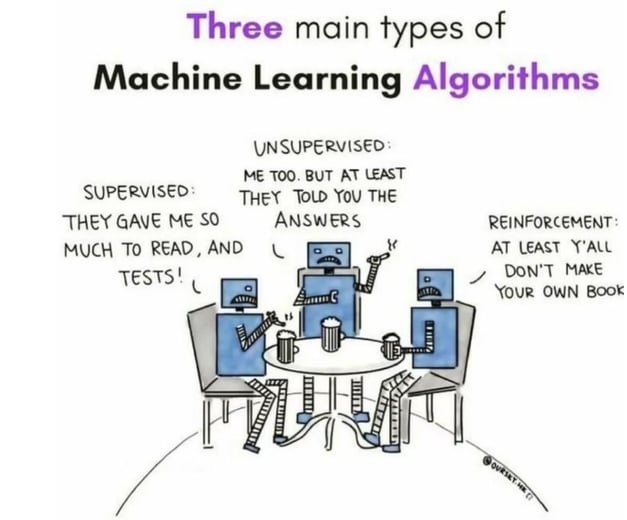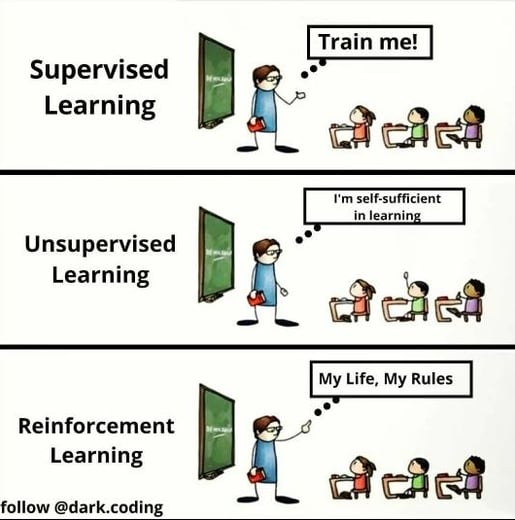Supervised, Unsupervised, and Reinforcement Learning: The Core Categories of Machine Learning
In the world of machine learning, there are three core approaches that set the foundation for nearly every technique we use: supervised, unsupervised, and reinforcement learning. Each of these categories provides a different way of training models and uncovering insights from data. If you're curious about these foundational methods and how they drive machine learning, check out our introductory post on Supervised, Unsupervised, and Reinforcement Learning—it’s the perfect starting point to explore the journey of machine learning essentials!
11/13/20244 min read


a beginner's guide to machine learnings types supervised, unsupervised and reinforcement learning
Machine learning may seem complex, but breaking it down into categories helps us understand how models learn and make decisions. Supervised, unsupervised and reinforcement learning are the core categories that guide how machines make sense of data—whether they’re following labeled examples, finding patterns, or learning through trial and error.
supervised & unsupervised learning
So let's take a look at supervised learning with some basic example.
When you were a kid, solutions were provided to you. We all were guided by our parents and guardians.
And those solutions and decisions were based on their past experiences. And you learned as you grew. That is nothing but supervised learning.
But when you start taking your own decision without any such result or outcome-based intelligence, it becomes an unsupervised learning example.
Supervised learning
In case of supervised learning, the data is labelled which means both the dependent and independent variables are provided.
The historic data helps us to find out a relationship between this X and Y. In more technical terms, supervised learning uses labeled data to map relationships between input (X) and output (Y) variables, helping us build predictive functions like
y = f(x)
And then we can use this function to predict the value of Y if we know the x.
Examples
· Regression – Output variable is a real value such as Amount, Height, Weight, etc.
· Classification - Sorting into categories, such as loan approved or not, or categorizing emails as spam or not spam.
In a sample dataset, if we know customers' income, credit history, and loan amount, we can use this labeled data to predict future loan approvals.
UNSupervised learning
Unsupervised learning, on the other hand, is what happens when we make our own decisions without guidance or labels—relying instead on discovering natural patterns. In unsupervised learning, the algorithm works without labeled outcomes, aiming to find patterns or structures within the data independently.
And here we don't have correct answers. There is no teacher also. So, what we mean by that is algorithms go on their own to discover the structure in the data.
Examples:
· Clustering - Grouping customers based on spending patterns, such as identifying high spenders and budget-conscious buyers.
· Association - Using recommendation models, like recommending items on an e-commerce site based on buying habits. For example, if a customer buys milk and bread, the algorithm may suggest buying eggs.
These algorithms essentially allow the data to "speak" and reveal hidden structures.
And that brings us to the last topic in this lecture of
reinforcement learning
So let me go back to the example of a kid learning in a supervised model and an adult taking some decision in an unsupervised way. But how do we know if those decisions taken in an unsupervised manner are going to give us the desired result?
And that is where the reinforcement learning helps us by rewarding the good decisions and penalizing the bad ones.
It's something like you should pay your bills on time. The reward is a good credit history.
Another example could be showing ads to different customer groups and measuring engagement. If the click-through rate improves, it suggests the ad is relevant, providing positive reinforcement for the chosen strategy.
For now, this concludes the lecture on how machine learning can be categorized into three categories.
sUMMARY
Let’s sum up the main types of Machine Learning to give you a clear takeaway:
- Supervised learning: Here, models learn from labeled data, meaning each example has a known output. This approach helps the model learn to map inputs to expected outputs, making it ideal for tasks where we already have labeled examples to guide predictions.
examples: linear regression, logistic regression, decision trees, Suport vector Machines, K-nearest Neigbors, Neural Networks,TimeSeriesAnalysis
- Unsupervised learning: Involves training a model on data without labels. The model tries to identify patterns and underlying structures in the input data.
examples: Self-Organizing Maps, Gaussian Mixture Models, Independent Components Analysis, Principal Component Analysis, Hierarchical Clustering
- Reinforcement Learning: Here, models learn by interacting with an environment and receiving feedback for their actions, such as rewards or penalties. This feedback loop helps the model make better decisions over time to maximize a desired outcome.
examples: Markov Decision Processes, Q-Learning, Deep Q-Networks, Policy Gradient Methods, Actor-Critic Methods, Multi-Armed Bandits.
If you're just starting out, remember that these buzzwords are tools and techniques that work together to make sense of data and solve real-world problems.
Keep exploring and experimenting, and soon enough, these terms will become second nature!
Remember, learning is always better with a smile, so here are some memes to keep things light!









